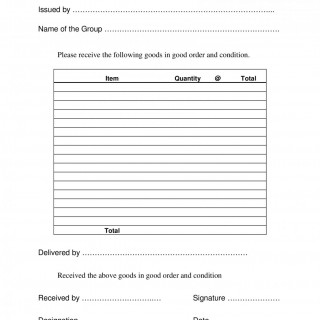Delivery note
A delivery note is a document that serves as proof of delivery for a shipment of goods. It is filled out by the seller or consignor and lists the description, grade, and quantity of the goods delivered. The delivery note consists of important fields such as the date of delivery, the name and address of the buyer or consignee, and a description of the goods delivered.
The buyer or consignee should check the delivery note upon delivery to ensure that the goods match the description on the note. If there are any deviations, delivery can be rejected. A copy of the delivery note, signed by the buyer or consignee, is returned to the seller or consignor as proof of delivery.
Сases of using delivery note
- In the case of a purchase order, a delivery note is used to confirm that the goods have been received and accepted by the purchaser. The delivery note should include the purchaser's contact information, the description of the goods being purchased, the quantity of the goods being purchased, the estimated value of the goods, and any applicable taxes or fees.
- In the case of a return or exchange of goods, a delivery note is used to confirm that the goods have been received and accepted by the recipient. The delivery note should include the recipient's contact information, the description of the goods being returned or exchanged, the quantity of the goods being returned or exchanged, the estimated value of the goods, and any applicable taxes or fees.
- In the case of a shipment of goods, a delivery note is used to confirm that the goods have been received and accepted by the consignee. The delivery note should include the consignee's contact information, the description of the goods being shipped, the weight/volume of the goods, the estimated value of the goods, and any applicable taxes or fees.
- In the case of a shipment of hazardous materials, a delivery note is used to confirm that the goods have been received and accepted by the consignee. The delivery note should include the consignee's contact information, the description of the hazardous materials being shipped, the estimated value of the materials, the hazardous materials' labeling, and any applicable safety requirements or warnings.
- In the case of a shipment of goods to an international destination, a delivery note is used to confirm that the goods have been received and accepted by the consignee. The delivery note should include the consignee's contact information, the description of the goods being shipped, the weight/volume of the goods, the estimated value of the goods, the applicable international customs regulations, and any applicable taxes or fees.
How to compile and fill delivery note
To compile a delivery note, you should include the following information:
1. Sender Information: This includes the name, address, and contact details of the sender.
2. Receiver Information: This includes the name, address, and contact details of the receiver.
3. Shipment Information: This includes the date of shipment, the tracking number, and the mode of transportation.
4. Product Information: This includes a description of the products being shipped, the quantity, and the weight.
5. Delivery Information: This includes the delivery address, the delivery date, and any specific delivery instructions.
6. Signature: The delivery note should be signed and dated by the receiver upon delivery.
It is important to ensure that all the information is accurate and complete to avoid any issues with the shipment. Once the delivery note is compiled, it should be attached to the shipment and a copy should be kept for your records.
When compiling a delivery note, the seller or consignor will need to have information on the goods being shipped, including the quantity, description, and grade. They will also need to have the name and address of the buyer or consignee. No additional documents are required to be attached to the delivery note.
Delivery notes are commonly used in the shipping and logistics industry. They are important for both the seller and the buyer as they provide proof of delivery and can be used to resolve disputes related to shipments.
One strength of the delivery note is that it provides a clear and concise record of the goods delivered and can help prevent misunderstandings or disputes. A weakness is that if the delivery note is not properly filled out or signed, it may not be accepted as proof of delivery.
An alternative form to the delivery note is the Bill of Lading, which is a legal document used in international trade that serves as a receipt of goods and a contract of carriage. The main difference between the two is that a Bill of Lading is a legal document that can be used to transfer ownership of the goods, while a delivery note is simply a proof of delivery.
Delivery notes are typically submitted to the buyer or consignee upon delivery and are stored by the seller or consignor for their records. They can be submitted in paper or electronic format.
Overall, a delivery note is an important document in the shipping and logistics industry that provides proof of delivery for a shipment of goods. It is important to ensure that it is properly filled out and signed to avoid disputes and ensure smooth transactions.

